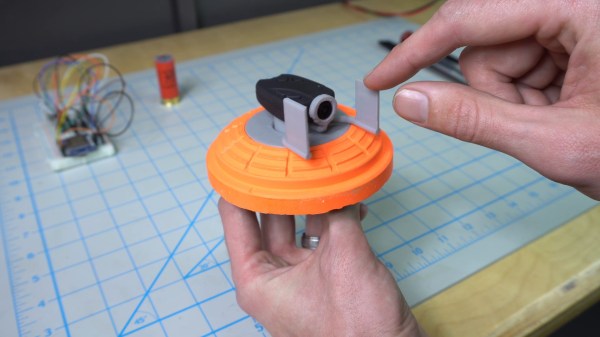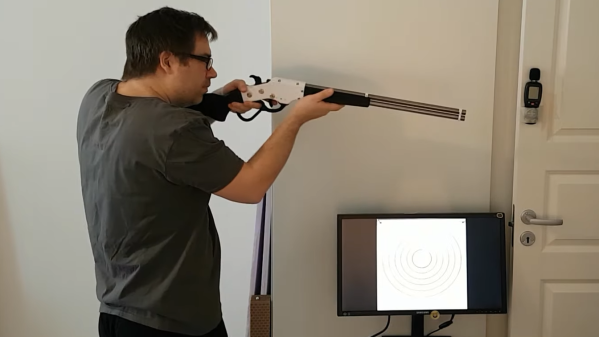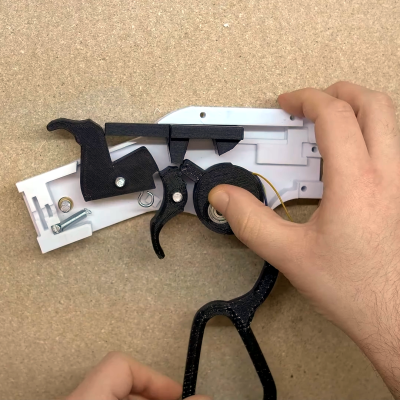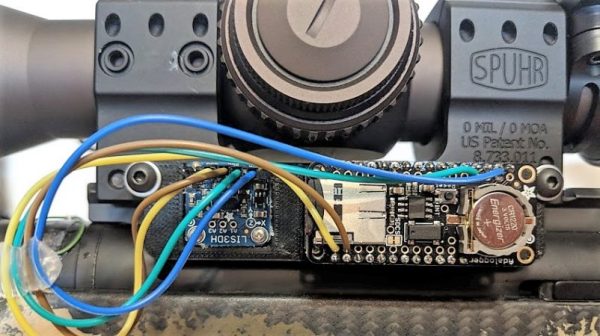Speaking from experience, it’s always fun to build something with the specific intention of destroying it. Childhood sessions spending hours building boats from scrap wood only to take them to a nearby creek to bombard them with rocks — we disrespectfully called this game “Pearl Harbor” — confirms this. As does the slightly more grown-up pursuit of building this one-time-use clay pigeon camera.
The backstory on this build, which dates all the way back to 2017, is that [Thomas] was invited to a birthday bash at the local shooting range for a round of trap shooting. For the uninitiated, trap is a sport that involves launching a clay disc (known as a pigeon) into the air as a moving target and shooting it down with a shotgun. It’s a lot of fun, but [Thomas] was looking for a way to make it even more fun.
After toying with the idea of buying a cheap drone for aerial target practice, he settled on the idea of making a clay pigeon camera. After procuring a cheap keychain camera, he designed a simple wind vane mount for the camera, to keep it pointed in one direction rather than spinning with the pigeon. The wind vane was 3D printed and attached to the pigeon with a skate bearing, and the rig was ready for the range. The snuff film below tells the whole tale; the camera performed admirably and the wind vane did a good job of steadying the camera for all of about five seconds, until the inevitable and dramatic demise of the pigeon.
Watching this makes us feel like we need more projects designed for intentional destruction. Safety first, of course, but we’d be keen to see what everyone comes up with.
Continue reading “Cheap Camera Gives Clay-Pigeon’s-Eye View Of Trap Shooting”














